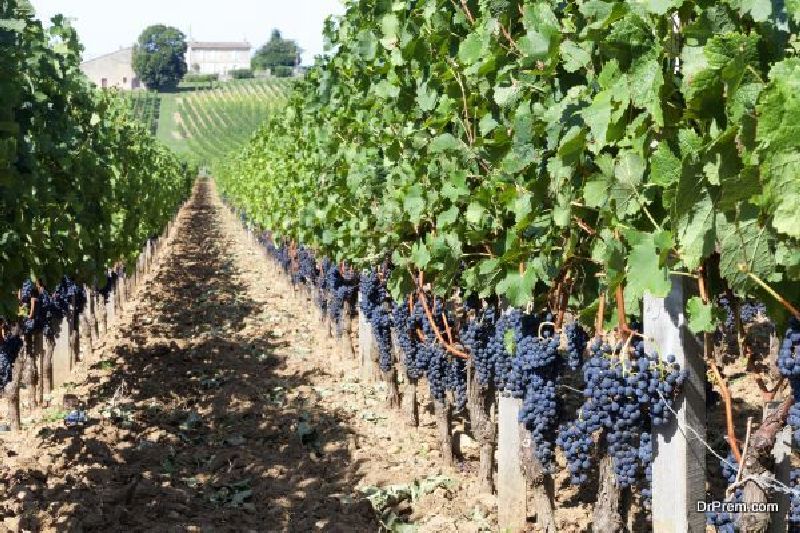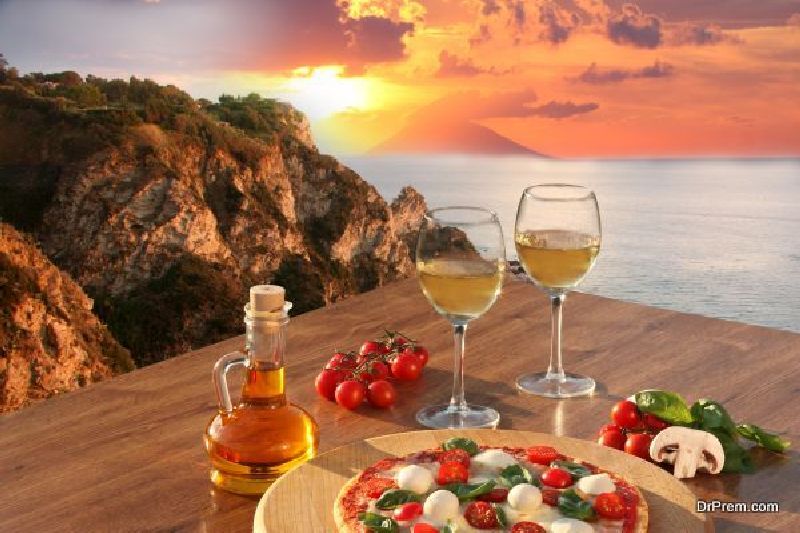The Spanish capital Madrid – famous for its many world heritage sites, thriving urban scene, and wonderful culture – has more than one side to it. Away from its skyscrapers, you can find its little-known side in the many vineyards not far from the city.
Here in the greater Madrid region, 800-meters above sea level, famous wineries continue a millennia-old Spanish tradition – wine making. And they don’t make just any wine. Instead, they make some of the best wines in the world.
Let’s learn more about the Madrid Wine Region.
A Brief History of Madrid Wines’

The history of Madrid’s wines goes back longer than you might think – two millennia, in fact. Just over 2,000 years ago, the Romans conquered the Iberian Peninsula, transforming it a Roman province. Soon after, like they did in most provinces, they introduced vines in the Peninsula and began the wine-making tradition you see today.
As for the Madrid region, no one knows for sure when wine production first began here. Yes, the first record of grape farming in the region dates back to the 13th Century. And yes, historians can prove the famous Garnacha grape was planted in San Martin in the 12th Century. But they suspect wineries existed here long before that.
As you might expect, because of such a long history of grape farming, wines have left their indelible mark on Madrid’s economy, cuisine, and culture. Their greatest mark, however, is the reputation the area enjoys throughout Spain because of its great wines. Now, let’s look at some facts about the famous Madrid Wines.
More about the Madrid Wine Region
The region’s climate and soil hold the key to its great wines. For most of the year, the climate remains hot and dry, especially during summer. Only during the cold winter months does the temperature drop.
On the other hand, the soil varies, depending on the region’s three areas. The soil in Arganda is either loam or loam mixed with clay. In San Martin, you’ll find granitic soil, and in Navalcarnero, a mixture of sand and loam.
The climate and soil, then, determine the four main grapes planted here. There is the Tempranillo and the Garnacha grapes for red wines and the Albillo Real and Malvar grapes for white wines. That said, although these four varieties dominate the vineyards, you can still find other varieties.
The most common of these are the Merlot, Syrah, and Cabernet Sauvignon, among others, for red wines. For white wines, you’ll find the Sauvignon Blanc, Airen, and Moscatel among others.
A Tour of Three Great Wineries

Even though we can’t take a physical tour of the region, we can take still look at three great wineries based here. Note one thing, though. These are not the only great wineries you’ll find here – many more exist. Instead, they’re just a few examples of what you can expect when you go looking for the best wine tasting in Madrid, to enjoy the best Madrid Wine the region has to offer. So here we go.
The Bodega del Real Cortijo de Carlos III Winery
One word describes the first winery into which we’ll look – impressive. The Bodega del Real Cortijo de Carlos III winery has a royal name, history, founder, architecture, cellar, and wines. Located in Arganda close to Aranjuez city, the winery came into existence in 1782, thanks to its founder King Carlos III, after whom it’s named.
As you’d expect of an institution founded by a monarch for his service, the vineyard boasts of Neo-classical architecture and a massive underground cellar. At 250-meters long, the subterranean vault has two compartments – the aptly named King’s and Queen’s vaults, which once held the wines for the two royals.
The quality of the Bodega del Real Cortijo royal wines has not diminished in the two centuries the winery has existed. Even today, they’re still hand-picked before being matured in oak barrels, creating both an impressive and an award-winning product.
For instance, one of the winery’s best products, the Homet Reserva 2006 wine, recently won the coveted Bacchus de Oro Gold Medal Award. After the accolade, it was described as having hints of tannins, cherries, leather, and balsamic notes. In short, it’s a wine you unhurriedly savour with both your nose and palate.
The Las Moradas de San Martin Winery

The next winery, situated in San Martin, also has an impressive history. During the Spanish Golden Age, lasting from 1492 to about 1659, the Las Moradas de San Martin wines were considered among the best in Spain. In fact, written documents saying as much still exist.
Even today, the winery’s products are famed for their quality. But what’s its secret? After hand-harvesting its Garnacha grapes, Las Moradas de San Martin crushes and soaks them under cold temperatures. This brings out the aroma and deepens the colour of the wine.
Next, the winery first ferments the must – or juice – and follows this up with malolactic fermentation before clarifying the wine in barrels. The end result is, among other wines, the famed La Sabina 2010.
Made from than vines more than half-a-century old, the wine was awarded 90 points on a scale of 100 by La GuiaPenin – Spain’s famous wine guide. The guide described the dark La Sabina 2010 as a black cherry marmalade – expressive, earthy, and mineral.
Bodega Quebel
Located on a hill surrounded by olive trees and aromatic plants, this winery in the Arganda area overlooks the whole Madrid wine region. It unique on our list because it has the shortest name of the three – Bodega Quebel. What’s more, it’s also the youngest of the lot at only a quarter-of-a-century old. In fact, its first vintage dates back to the year 2,000.
But don’t let that fool you. Despite its tender age and unassuming name, this winery’s products are not short on quality, reputation, or accolades. Like with the other two wineries, Bodega Quebel’s grapes are hand-harvested, fermented at controlled temperatures, and matured in oak barrels.
However, this winery’s owners, Estella and Carlos, pride themselves in intervening very little in the production of their red and white wines. In addition, they do so in the most environmentally friendly manner possible. For their efforts, they’re rewarded with the Mayrit Sauvignon Blanc 2013 – their best wine.
Named after the ancient Arabic name for Madrid, the Mayrit is as aromatic as the plants surrounding the vineyard. The wine boasts of rosemary, lemon, and gooseberry aromas alongside mineral notes. It tops this with a memorable lingering finish, making it the perfect wine to enjoy unaccompanied. But if you must accompany it with anything, some seafood or some cheese will do just fine. If you are looking for nightclub in Madrid kindly check this Madrid Nightclubs.
Conclusion
When the Romans introduced vines into Spain, they began the long history of Spanish wine-making and, by extension, that of the famous Madrid wine region, too. According to historical documents, the region had wineries as far back as the 13th Century and continues to do so today. This wine-making heritage is visible everywhere in Madrid – in the culture, in the economy, in the cuisine.
But it’s most visible in the landscape. As far as the eye can see, vineyards thrive in the hot, dry climate, as well as the loamy, clay-loamy, and sandy-loamy soils. The most notable of these are the Bodega del Real Cortijo de Carlos III, the Las Moradas de San Martin, and the Bodega Quebel wineries. Although each makes its own unique wines, all the wines stand out for their quality, fame, and awards.
Article Submitted By Community Writer


